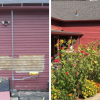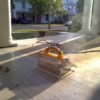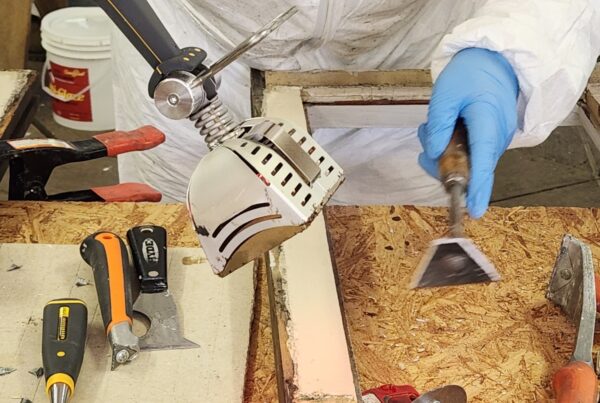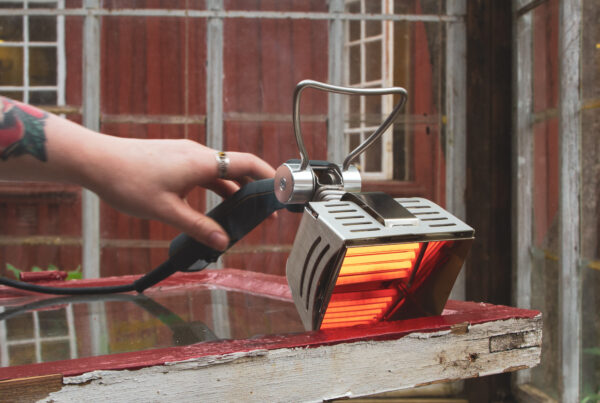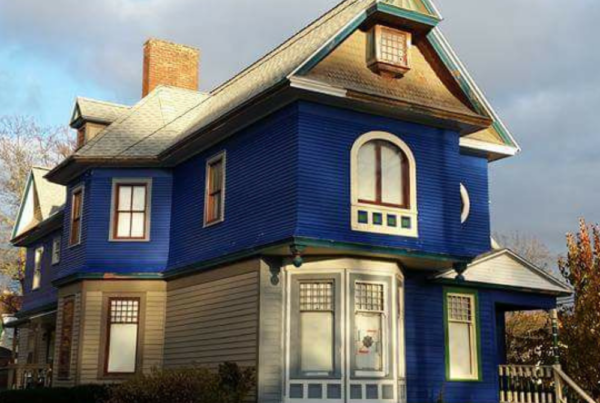Many of us are interested in restoring old windows. But how many of us know the fascinating journey of glass windows through time? Although most people don’t give it much thought, glass windows are one of the most essential parts of a home. They allow us to connect with the outside world visually. They brighten living and working spaces and enhance the beauty of not only the exterior of a building but also the inner space. Perhaps the greatest benefit of glass windows is their ability to improve the mood and well-being of their building occupants.
Glass is inorganic and can be molded into many shapes. It is usually transparent or opaque. Glass is created by applying high heat to sand or quartz until it is molten. It makes an excellent medium for opening up spaces with light when used for partitions, doors or windows. As opposed to very early windows made of paper, glass windows repel water and protect a building’s interior during inclement weather.
In order to fully appreciate glass windows, you need to understand their history and how they came to be one of the most common elements of homes and buildings today.
The Invention of Glass Windows
Although glass was used in beads and vessels in the Late Bronze Age (around 1200 BC) in Egypt, it was not used for windows until the Roman Empire. These windows looked nothing like the flat, transparent windows we know today. The earliest kinds of windows were panes of shiny and glassy pebbles fitted into wooden frames. Very little light passed through these windows.
During the 1st century, glass blowing was invented. Air was blown into globs of molten glass to create a bubble, then a long cylinder. The cylinder end was cut off, one side was opened, and heated again to flattened it out. This glass had a very rough appearance and was not always transparent.
Glass Windows during the Dark Ages (5th – 15th centuries)
During the Dark Ages, most glass windows in buildings were replaced by wooden panels to keep out the cold. Despite the decline of window glass for architectural purposes, it began being used in European Catholic churches. Metal oxides were added to molten glass and small pieces of colored glass were created. These small pieces were combined to make large windows. Often these colored panes included gorgeous illustrations.
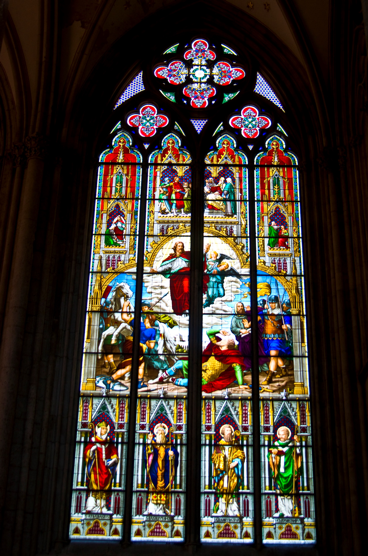
The first mouth-blown cylinder technique of making sheet glass for windows was developed in Germany during the 11th century. In 1226 this technique was brought to England. This new type of glass was called broad glass. In this process, molten glass was gathered on a blowpipe and blown to an elongated, balloon shape. The ends were then cut off, the cylinder split with shears while the glass was still hot, and then the cylinder flattened on an iron plate.
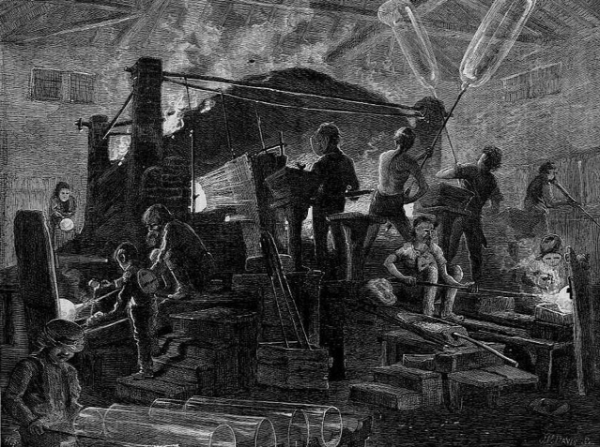
Among the Glass-Workers, an 1871 engraving by Harry Fenn
Fortunately, as more people learned how to make thin, smooth panes of glass, windows became more common and affordable. The quality of the glass was poor, had many imperfections, and was fairly opaque. Manufacture of this type of window glass slowly decreased and ceased by the early 16th century.
Crown Glass Windows
During the Middle Ages, new methods allowed for the creation of flatter, smoother glass window panes. During the 14th century, French glassmakers perfected the process and further enhanced their techniques to create what is known as “crown glass”.
The creation of this historic type of glass window involved the following process:
- Blowing molten glass into a hollow globe
- Transferring the soft glass from the blowpipe onto a solid metal rod.
- Reheating and rapidly spinning a bowl-shaped glob of glass into a large, flat disk – “a crown”
- Cutting the large disk of glass into smaller pieces.
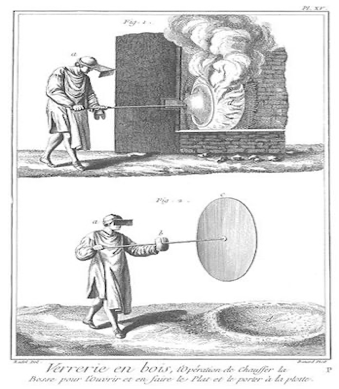
Blowing and flattening the disk in the process of making crown glass (1)
Crown glass was more transparent and better quality than broad glass. However, this process created uneven thicknesses of glass, with the edges being much thinner than the center of the disk. Glassmakers set aside the thicker, center glass (called the bullseye) for less expensive windows. For projects that required a large quantity of high-quality glass, only small shapes could be cut from the outer edges to keep the glass of relatively consistent thicknesses.

From the Corning Museum of Glass (2)

Bullseye panes in a renovation project- Robert Silverwood (3)
This discovery of higher quality glass increased the popularity of glass windows in the mid-16th century. However, the intricate process of constructing flat, smooth glass was not widely known. This kept glass windows a luxury even for the very wealthy.
Cylinder Glass Windows in Late 1700’s and early 1800’s
Eventually, another method was developed in the late 1700s or early 1800s from which much larger panes could be made. That type of window glass was called “cylinder glass”. As more people learned how to make thin, smooth panes of glass from cylinders, windows became more common and affordable.
Cylinder glass begins in the same way as crown glass – by blowing glass into a hollow globe. The difference is that the glass is blown into a shape like a large, long bottle. Glassmakers then stood on a high, vertical platform and further blew the glass into a deep trench. That allowed them to create long cylinders of about one foot in diameter and five feet long. These cylinders were then cut along their length and reheated to flatten the glass.

From Corning Museum of Glass (2)

Man standing over trench blowing cylinder (1)
While some cylinder glass window panes were made in the U.S. after 1608, most glass windows in early America were shipped from England.
Plate glass in the 17th century
Plate glass was invented in France in the 17th century. It was the first method that did not involve hand blowing molten glass. Instead, it was pouring molten glass into an inclined plane, passing it through rollers, allowing it to cool slowly, and then grinding and polishing both sides.
Following the Industrial Revolution, glass windows became much more common in homes and other structures in America. In 1903, U.S. glassmakers developed the first mechanical method for drawing cylinders of window glass. The Machine Drawn Cylinder glass was the first mechanical method for doing this. 40 ft high cylinders of glass were drawn vertically from a circular tank, cooled slowly or annealed, and cut into 7-10 ft cylinders. These were then cut lengthways, reheated and flattened.
In 1913 Belgium produced the first Machine Flat Drawn Sheet glass. In this method the glass was drawn vertically in a flat sheet until it cooled sufficiently to allow the glass to be cut without breaking.
For more photographs and descriptions of historic glass from 1800 to the present, go to Steve Jordan’s book, The Window Sash Bible, Pages 82-84. And Window Glazing, Puttying, and Replacing Glass in Traditional Wood Windows. chapter 4 pages 50-63
Float Glass
In the late 1950`s Sir Alastair Pilkington introduced the Float Glass Production Method by which 90% of flat glass is still manufactured today. In this method, a layer of molten glass is “floated” on to a bath of molten tin and produces fine quality glass with a mirror-like reflection and no wave or distortion. This was a major scientific and manufacturing achievement. It allowed for the mass production of glass window panes for doors, windows and partitions without the labor-intensive final processing previously required.
Why Bother to Save Antique Glass Windows?
Window glass prior to the 1950’s is considered historical or antique glass. Each type of this glass has a unique look and feel. Wavy glass and bullseye glass are the most common historical glass in the 19th and 20th centuries. These windows tell the history of a building. Restoring not replacing them maintains the historical look and integrity of an older building.
Eco-Strip recommends restoring antique windows as opposed to replacing them. Properly restored and weatherized old windows are proven in the field (not just in laboratories) to be as energy-efficient as modern, replacement windows. Replacement windows rarely are warrantied for more than 20 years; then they must be replaced again. For this reason, some window purists call them “disposable” windows. Stripped, repainted, reglazed/resealed, and weatherized windows need some maintenance over their lifetime. However, the total cost of restoration and maintenance for their 50+ year lifetime is a much smaller investment than multiple, full-window replacements over the same time period.
Eco-Strip’s Speedheater™ products enable quick and efficient paint and putty removal on old windows. Our Window Tool Kit comes equipped with 3 unique tools. In combination with either Speedheater™ 1100 Infrared Paint Remover or the Speedheater™ Cobra, window restoration can be done without damaging the window glass or delicate wood. Our Window Tools Kit includes:
- Boomerang Scraper to strip the heated paint off the flat surfaces, narrow grooves and tight corners.
- Chisel with Roller to smoothly and evenly remove large pieces of softened putty from fragile wood
- Putty Scraper to loosen putty from the glass and from the wooden bed holding the glass pane

If your project is too big for you to do yourself, consider aligning with a professional team. Eco-Strip would like to introduce you to The Window Preservation Alliance (WPA). WPA was formed in response to requests to have window restorers exhibit at regional and national building and historic preservation events. Since most window restorers work in geographically small areas, it made no sense as individual companies to have this sort of presence. But, as a group, representation can be equal to or greater than the replacement window manufacturers. In working together, we can save original windows.
The aim of the WPA is to include all who want to help change the conversation about windows. We want to connect those who wish to save their windows with professionals who can provide the needed services. We want to simplify the process of finding the appropriate materials and products for window restoration. We want to introduce those considering window restoration as a career to professionals who can help them grow. Our goal is to help preservationists find the tools they need to educate building owners, architects, and other decision makers about the value of original windows.
The Window Preservation Alliance (WPA) is an organization focusing on educating the public about the pros of restoring not replacing old windows. Explore an extensive directory that provides valuable search capability for readers to find professional restorers in every US state, articles, and other resources and products to help DIYers. Eco-Strip & The Window Preservation Alliance can help you to find the right path for you and your project!
Sources:
https://eco-strip.com/why-restore-not-replace-your-old-windows-2/ Eco-Strip Blog
https://mikegigi.com/periodgl.htm Illustrations of historic glass creation; types of historic glass
https://www.youtube.com/watch?v=QXQMc0jsl2E 5 min. video of making contemporary, mouth-blown sheet glass
http://www.historyofglass.com/glass-history/ Ancient history of glass
http://londoncrownglass.com/Manufacturing.html History of types of glass replicated by a specialty company started in the early 19th century in UK
https://study.com/academy/lesson/types-of-glass-production-cylinder-crown.html
https://www.peachridgeglass.com/2012/04/the-bulls-eye-glass-pane/
https://commons.wikimedia.org/wiki/File:Pittsburgh_Sketches_–_Among_the_Glass-Workers.jpg
Window Sah Bible, Steve Jordan 2015
Footnotes:
- https://study.com/academy/lesson/types-of-glass-production-cylinder-crown.html
- https://home.cmog.org/
- https://www.peachridgeglass.com/2012/04/the-bulls-eye-glass-pane/
*updated 3/21/2025

